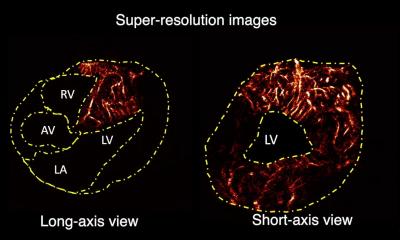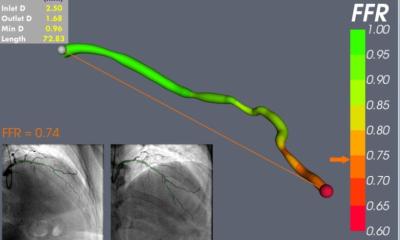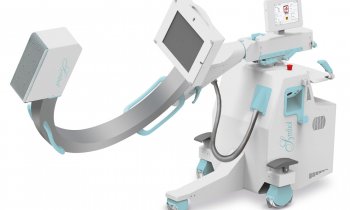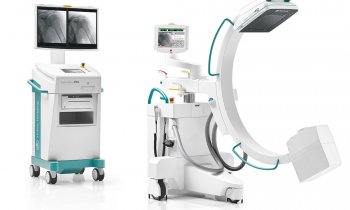
© Pitchy – stock.adobe.com
News • Surprising study results
Coronary bypass: new insights on ‘no-touch’ vein harvesting
No-touch graft harvesting did not appear to be beneficial compared with the conventional technique for coronary artery bypass grafting (CABG), according to late-breaking research presented in a Hot Line session at ESC Congress 2024.
“For CABG surgery to be successful in treating ischaemic heart disease, the graft should provide sufficient myocardial blood supply. However, graft failure, where the graft becomes blocked, occurs in up to half of patients within 10 years.1 Trials have suggested that using a ‘no-touch’ technique to harvest the saphenous vein graft, where the vein is harvested with part of the surrounding tissue, may reduce graft failure compared with the conventional open technique where the vein is stripped of surrounding tissue prior to grafting.2,3 We conducted the SWEDEGRAFT trial, designed to reflect routine clinical practice, to compare no-touch and conventional harvesting in terms of short-term graft failure and long-term outcomes and found no benefit with the no-touch technique,” explained study chair and presenter, Professor Stefan James from Uppsala University, Uppsala, Sweden.
SWEDEGRAFT was a registry-based, randomised trial designed to investigate whether a strategy of no-touch vein grafts was superior to the conventional vein graft technique in patients undergoing CABG.4 Patients under 80 years old were enrolled who were scheduled for first-time isolated non-emergent CABG with at least one saphenous vein graft. Patients were randomly assigned in a 1:1 ratio to vein graft harvest using the no-touch technique or the conventional technique.
We have shown that the no-touch technique was not superior to the conventional technique in reducing graft failure or improving clinical events after CABG and was associated with more early and late leg wound complications
Stefan James
The primary endpoint was the proportion of patients with graft failure defined as: graft occluded or stenosed >50% on coronary computed tomography angiography at 2 years after CABG, clinically driven coronary angiography demonstrating an occluded or stenosed >50% vein graft, or death within 2 years. Secondary endpoints included major adverse cardiovascular events (MACE, defined as all-cause death, myocardial infarction or any repeat revascularisation during follow-up) and post-operative leg wound complications.
In total, 902 participants were randomised at all eight surgical sites in Sweden and one Danish site. The mean age was 67 years and 88% were male. The mean European System for Cardiac Operative Risk Evaluation (EuroSCORE) II score was 1.6. In 53% of cases, CABG was performed as an elective procedure. There was no significant difference in the primary endpoint of graft failure within 2 years, which occurred in 19.8% of patients in the no-touch group and 24.0% of patients in the conventional group (difference −4.3%; 95% confidence interval [CI] −10.1 to 1.6; p=0.15). There were no significant differences in any of the three individual components of the primary endpoint.
In addition, the incidence of MACE was similar in the no-touch and conventional groups at mean follow-up of 52 months (12.6% vs. 9.9%, respectively; hazard ratio 1.30; 95% CI 0.87–1.93; p=0.195). However, there were significantly more leg wound complications in patients randomised to no-touch vs. conventional grafts at 3 months (24.7% vs. 13.8%, respectively; difference 10.9%; 95% CI 5.7–16.1) and at 2 years (49.6% vs. 25.2%, respectively; difference 24.4%; 95% CI 17.7–31.1).
Summing up, Professor James said: “We have shown that the no-touch technique was not superior to the conventional technique in reducing graft failure or improving clinical events after CABG and was associated with more early and late leg wound complications. There was surprisingly good longevity of conventional vein grafts, reflecting the high quality of surgical and medical standards in Scandinavia. Our study highlights the importance of independent research where dedicated clinicians collaborate in large all-comer randomised controlled trials to determine the best treatment for the benefit of our patients. Results from this pragmatic registry trial do not support the routine use of no-touch harvesting and our findings should be considered in future guidelines.”
References:
- Goldman S, Zadina K, Moritz T, et al. Long-term patency of saphenous vein and left internal mammary artery grafts after coronary artery bypass surgery: results from a Department of Veterans Affairs Cooperative Study. J Am Coll Cardiol. 2004;44:2149–2156.
- Sousa DSR, Dashwood MR, Tsui JCS, et al. Improved patency in vein grafts harvested with surrounding tissue: results of a randomized study using three harvesting techniques. Ann Thorac Surg. 2002;73:1189–1195.
- Tian M, Wang X, Sun H, et al. No-touch versus conventional vein harvesting techniques at 12 months after coronary artery bypass grafting surgery: multicenter randomized, controlled trial. Circulation. 2021;144:1120–1129.
- Ragnarsson S, Janiec M, Modrau IS, et al. No-touch saphenous vein grafts in coronary artery surgery (SWEDEGRAFT): Rationale and design of a multicenter, prospective, registry-based randomized clinical trial. Am Heart J. 2020;224:17–24.
Source: European Society of Cardiology
05.09.2024











